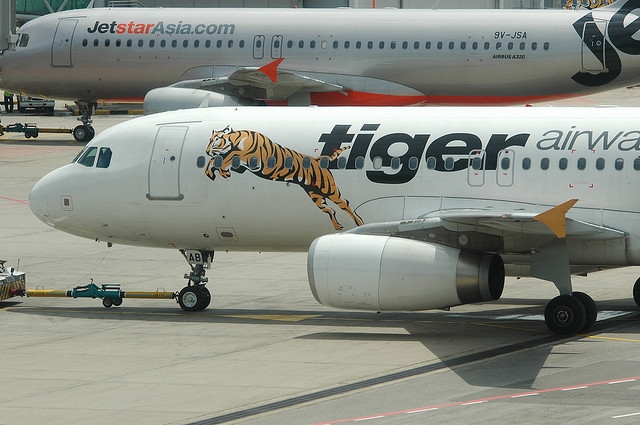
Tiger Airways will roar back in 2013: CIMB
Stronger yields, higher fleet utilization and wider regional expansion are all in the cards for what could be the airlines' comeback year.
In fact, it could turn around its losses as early as 2HFY13 if management makes good on its promises to refocus on profitability and pursue its Asia expansion aggresively.
Here's more from CIMB:
Having restructured its operations in FY12, Tiger is back with a vengeance in FY13. We are expecting stronger yields supporting Australia, higher fleet utilization, and progress in regional expansion to turn losses into profits in 2HFY13. We see a credible turnaround story developing.
We are pleased with Tiger’s progress. We see a more structured organization, with clear strategies for its regional and domestic expansion. We expect higher fleet utilisation and stronger demand going forward. Tiger Singapore will sweat its aircraft by reducing its fleet from 21 to 19, but increasing seat capacity by 7% in the Northern Summer season. Tiger Australia will ramp up its daily flight sectors to 64 by September 2012. New deliveries coming on stream will be parked in Mandala (+5 A320s) and SEAIR (+3 A320s). Management stressed that returning to profitability is its priority now. In short, losses will narrow and Tiger could report profits in 2HFY13.
Following a change in management with new corporate processes in place, Tiger Australia is running more like a well-oiled machine. We expect Tiger Australia to be a major driver in FY13. Passenger yields are now stronger than pre-suspension days, growing 5.6% yoy to 8.45 Scts. Yields would have been stronger if not for lower ancillary revenue stream as demand for ancillary products and services are now lower as Tiger Australia is operating shorter haul flights compared to pre-suspension days. During the briefing, management emphasised that revenue maximisation will be the focus in Australia and it will not want to introduce overly discounted fares anymore.This means that Tiger’s business model will be more sustainable going forward and the overall industry yield environment will be healthier.
























 Advertise
Advertise






